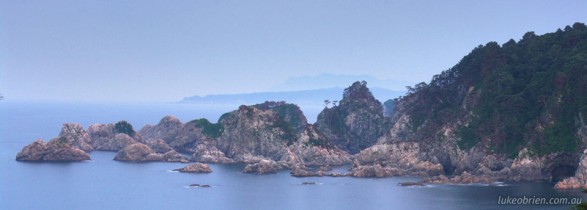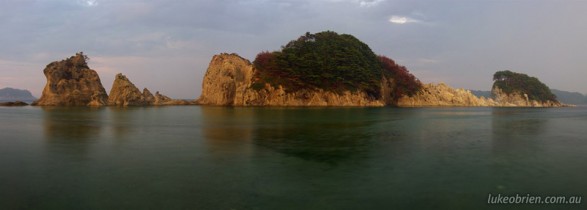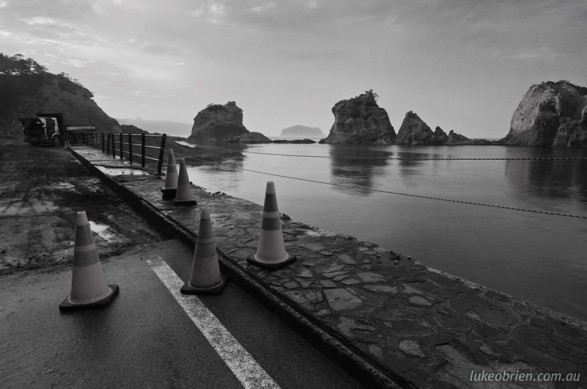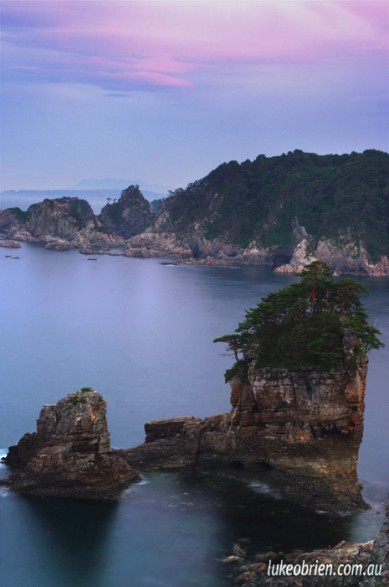Japan After the Tsunami: Rikuchu Kaigan National Park
In July & August this year we spent four weeks in the disaster affected area of north east Japan (Tohoku). Mostly we were based in Fukushima, but we made numerous trips around Tohoku to visit areas hit hardest by the quake and tsunami. Our aim was to take photographs for a fundraising exhibition here in Hobart in November. The exhibition is titled “Rebuilding Lives” and will highlight how communities are coping 4-5 months after the disaster. We would also like to highlight the beauty of Tohoku, as it is generally less visited than other parts of Japan, and will need a lot of support to get back on its feet after March 11.
Rikuchu Kaigan National Park: Hit hard
We spent a few days in the Rikuchu Kaigan National Park, which runs along the coast of Iwate Prefecture. This is the coast that was hit hardest by the tsunami. One of the main attractions is “Jodogahama”, in Miyako City. The attraction is beautiful offshore islands covered in pines, and a white sandy beach and visitor centre. Sadly, most of the visitor facilities were lost, but the main visitor centre at the park entrance was spared. A lot of the pines covering the islands now have died after being immersed in salt water -see the brown trees in the image below.
The main visitor site on the beach is currently being replaced. Large chunks of the road were completely washed away, and the hotel we stayed in was also serving as the base for the local police, army and volunteers who were involved in the clean up.
Further up the coast from Miyako is the small town of Tarou, which is home to beautiful coast features including these rocks (below) called “Sanouiwa”. Tarou suffered severely from the tsunami but “sanouiwa” survived more or less intact. The staff at the National Park Visitor Centre now look at Sanouiwa as a symbol of hope that visitors will one day return too. When we visited, the car park was full of heavy machinery and all tracks were roped off. We witnessed a beautiful dusk however, and I was able to capture the following photograph. We hope it serves to remind people of the beauty of Tohoku.
Japan earthquake and tsunami: Fundraising Exhibition
Don’t forget, “Rebuilding Lives”, the Fundraising Exhibition for North East Japan Opens Nov 21 at 6:00pm and runs until November 28 at the Waterside Pavilion in Hobart’s Mawson Place. Entry is by donation. We’d love to see you there! UPDATE November 2011: Exhibition Summary – new page.



